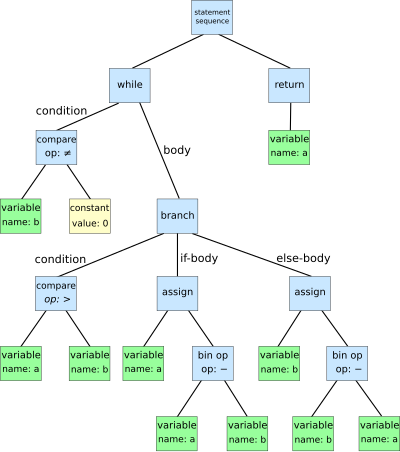compiler life
src/test/resources/public/input/lexer/fail01.jova
src/test/resources/public/input/lexer/fail01.jova
Commands:
./gradlew compileJava
./gradlew compileTestJava
./gradlew printTree -PfileName=PATH_TO_JOVA_FILE
./gradlew clean
./gradlew compileJava && ./gradlew compileTestJava && ./gradlew printTree -PfileName=PATH_TO_JOVA_FILE && ./gradlew clean./gradlew printTree -PfileName=main/antlr/at/tugraz/ist/cc/Calc.g4gradlew permission denied
https://www.cloudhadoop.com/gradlew-permission-denied/
src/test/resources/public/input/lexerhttps://en.wikipedia.org/wiki/Abstract_syntax_tree
https://en.wikipedia.org/wiki/Parse_tree

citation:
For example, in a = b + c, we evaluate the value of b and c, add them together, and then associate or store the result in a. Here b and c have the context that we call right hand side — b and c are on the right hand side (of an assignment), whereas a has left hand side context — a is on the left hand side of an assignment. We need the value of b and c yet the location of a to store the result.
A complex left hand side expression will itself also involve some right hand side evaluation. For example, a[i] = 5 requires evaluting a and i as values (as if right hand side) and only the array indexing itself is evalutated as left hand side (for storage location). 5, of course, is understood as right hand side.
| M | T | W | T | F | S | S |
|---|---|---|---|---|---|---|
| 1 | 2 | 3 | 4 | 5 | ||
| 6 | 7 | 8 | 9 | 10 | 11 | 12 |
| 13 | 14 | 15 | 16 | 17 | 18 | 19 |
| 20 | 21 | 22 | 23 | 24 | 25 | 26 |
| 27 | 28 | 29 | 30 | 31 | ||
Recent Comments